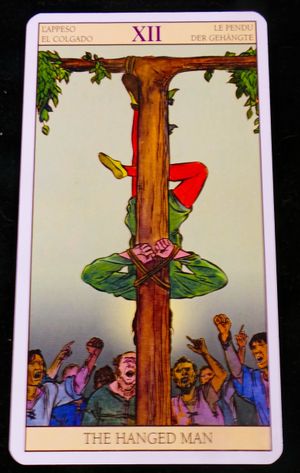Difference between revisions of "Ye.Sh.U. NoTzRY"
| Line 13: | Line 13: | ||
He was nicknamed '''מסיח''' by the Karaites. | He was nicknamed '''מסיח''' by the Karaites. | ||
| − | He is admired in Karaite sources such as for example Judah Hadasi but | + | He is admired in Karaite sources such as for example Judah Hadasi but John, Paul and Peter are criticized for changing his teachings to establish the Christian faith instead. Rabbinical sources on the other hand criticize him and defend the John, Paul and Peter who wrote the Evangelion as agents of Rabbinical Judaism. |
Hadasi also refers to [[Queen Helene Adiabene]] and a son of hers called Constans who became his disciples. | Hadasi also refers to [[Queen Helene Adiabene]] and a son of hers called Constans who became his disciples. | ||
Revision as of 07:19, 29 December 2022
יז״וש (Yimakh Zikhron U Shemo) Yizush or Yazush or Yezush or Yazosh or Jezus is also known as Yeshu Natzri and Ha-Mitzri (after the Blasphemer of Leviticus 24:10) and Dositheus and Ben Stada. He is the traditional Eastern Yiddish Ashkenazi version of Krampus who appears on the last night of Saturnalia called Nittel.
Yazosh was the son of Miriam Magdalena and Joses Pantera the (step)brother of Rebbe Yehoshuah Minzaret.
The sea he came from is the Red Sea (the Sea of Edom meaning mamzerim). The 7 letters are the 7 heads (one of which is damaged). The tops of the letters stand for the 10 horns. There are also 10 crowns (crownable letters are only crowned once per noun).
His story is related in Karaite sources as well as in the Teliya Ye.Sh.U. which relates to התלי the source of his power.
He was nicknamed מסיח by the Karaites.
He is admired in Karaite sources such as for example Judah Hadasi but John, Paul and Peter are criticized for changing his teachings to establish the Christian faith instead. Rabbinical sources on the other hand criticize him and defend the John, Paul and Peter who wrote the Evangelion as agents of Rabbinical Judaism.
Hadasi also refers to Queen Helene Adiabene and a son of hers called Constans who became his disciples.
Unlike Karaite sources which criticize Queen Helene, the Jewish sources speak in complementary terms about her.
According to some versions of the Teliya Ye.Sh.U., he subscribed to the Kenite Hypothes whereby the Kinaidokolpitai introduced Rabbinism to the Children of Israel at Mount Sinai as also suggested in the Quran which points out that "Hanifian Abraham" was not "Hudan" although Moses was. As a result this Hypothesis passed into Messianic Noahism.
According to the Otiyot de-Rabbi Aqiva, on the Letter Tsade, the two horns of the letter Tsade refer to Ye.Sh.U. NoTzRY who took hold of two heads, Jacob and Edom, and caused people to Err.
In the Persian Yosef al-Hamaden 's Ta'amei haMitzvot calls him an abominable detestable villain and evil person.
R. Yitzhaq Abarbanel's Yeshuot Meshicho states that he was a gilgul of Esav.

